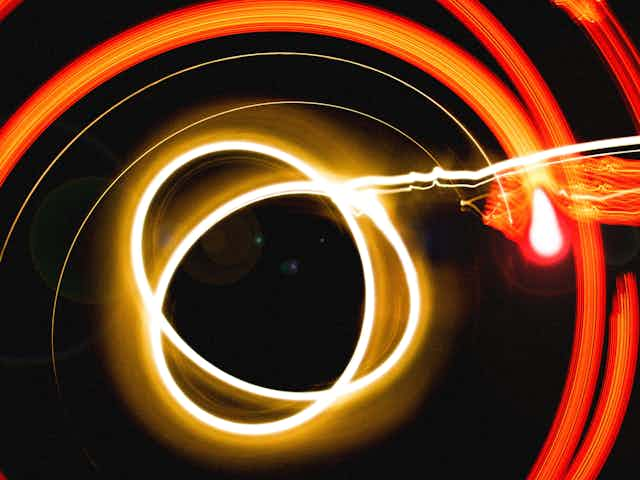What is a quantum technology?
Quantum mechanics is the branch of physics that explains the behaviour of matter and energy at the atomic scale. So does “quantum technology’’ just mean technology based on very small things? Is it just a cool-sounding synonym for nanotechnology?
No! Quantum mechanics is certainly needed for designing a nanotechnology such as flash memory, but a quantum technology is something different.
It is a technology that makes use of the weirdness of quantum mechanics in a fundamental way - a technology whose operation makes no sense if you don’t understand quantum mechanics.
In particular, quantum weirdness allows for impossibly fast computers and unhackable communication, which will be some of the defining technologies of the 21st century.
What’s so weird about quantum mechanics?
In everyday life, we usually have a good sense of intuition regarding how the physical world will behave. Drop a glass and it will smash on the floor. Punch a concrete wall and your fist won’t go through it.

But in the world of the ultra-small – atoms, electrons, even very dim light – none of the normal rules apply. Instead particles follow quantum rules that are quite baffling.
Heisenberg’s Uncertainty Principle says that if you are sure how fast a particle is moving, you won’t be able to predict where you would find it if you look for it. And if you are sure where the particle is, you won’t be able to predict the value you’d get for its speed if you measure that instead.
Moreover, quantum theory says that this is not due to any limitations on our experimental abilities – the world itself is uncertain!

The really disturbing thing is that, according to quantum theory, there is nothing to stop this intrinsic uncertainty about microscopic matter growing into intrinsic uncertainty about everyday objects.
This is illustrated by the infamous Schrödinger’s cat paradox, which says that a cat in a box could end up in a state where it’s impossible to say whether it’s alive or dead. It’s not just that we are ignorant of whether the cat’s alive or dead – until we open the box to look, it’s neither.
Or both. Even quantum physicists disagree about how to describe it.
Ultrafast quantum computing
Quantum computing is Schrödinger’s cat put to work. By building a computer out of quantum particles, it’s possible to make the entire memory of the computer intrinsically uncertain, just like the health of the cat. This allows the computer to carry out astronomically many different computations in parallel.
The real trick is to bring all those computations together at the end to give the single answer you want. But if this could be done, a relatively small quantum computer could solve mathematical problems that couldn’t be solved with all the present computers in the world running for a million years.

The first useful quantum algorithm – a piece of software for a quantum computer – that managed this trick was discovered in the 1990s.
The far greater challenge is to build the quantum computer hardware that will work reliably enough, and is big enough, to run this software.
Worldwide there is a huge experimental effort to do just that. In Australia, the Centre for Quantum Computation and Communication Technology (CQC2T) is a world-leader in two of the most promising types of hardware for a quantum computer: photons (particles of light), and the electrons of phosphorus atoms embedded in silicon.
Ultrasecure quantum communication
The other principal application of quantum technology is to make a message secure against any sort of hacker, no matter how powerful their computer is – even a quantum computer!
The basic idea is simple. Heisenberg’s Uncertainty Principle implies that if you find out one property of a particle you necessarily create uncertainty in other properties. That is, quantum particles are disturbed by measurements. Because of this, an eavesdropper trying to read a secret message encoded on photons can be detected before they have a chance to obtain any real information.
Quantum communication protocols were first developed in the 1980s, and there are short-range systems in commercial operation in many countries, including an Australian one developed by CQC2T researchers.
The grand challenge, which is being tackled worldwide, including in CQC2T, is to extend the range of the communication. Because quantum messages cannot be copied, this requires other weird quantum effects, such as quantum teleportation.
The ultimate goal is to network quantum computers all over the globe, creating a global quantum internet.
As of now, we can only speculate about the scientific and other uses we will find for that, should it become a reality.
See more Explainer articles on The Conversation.

